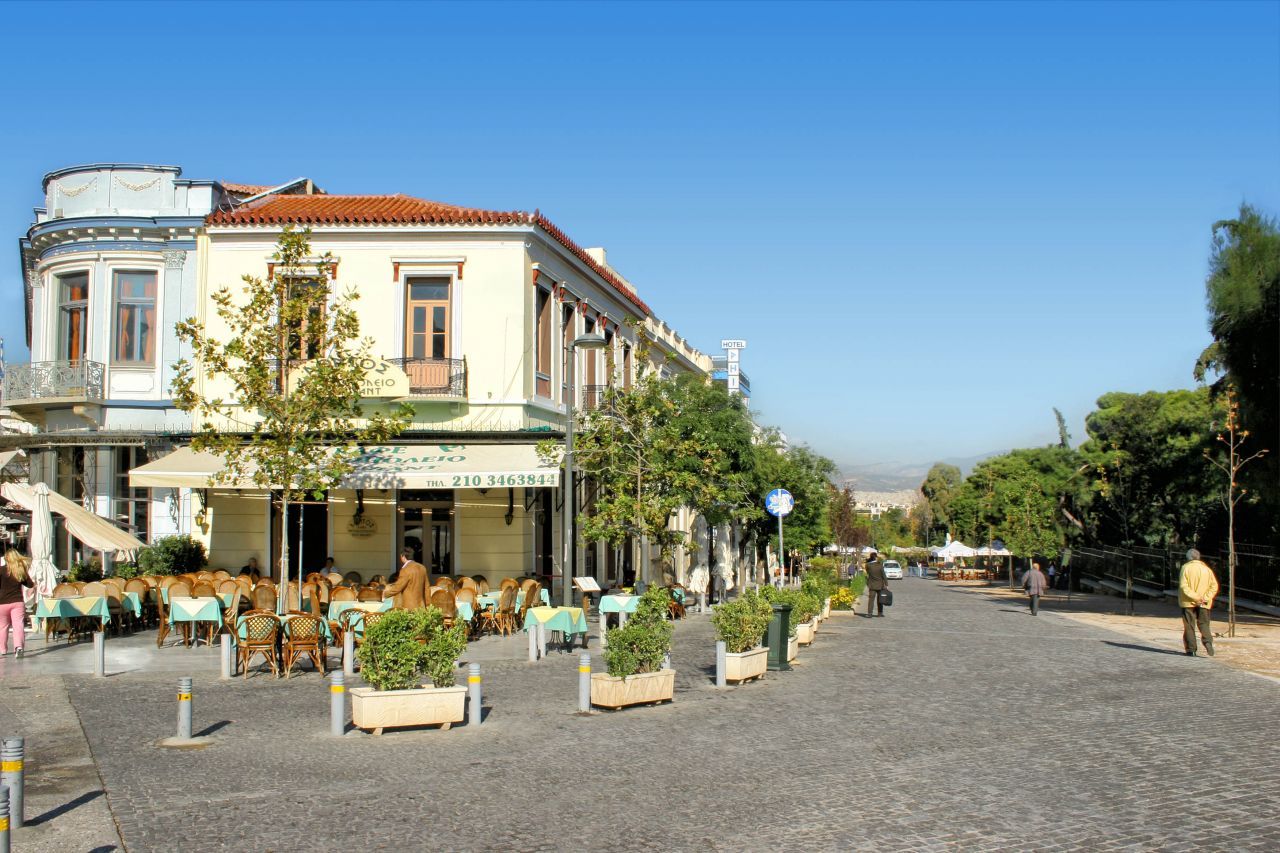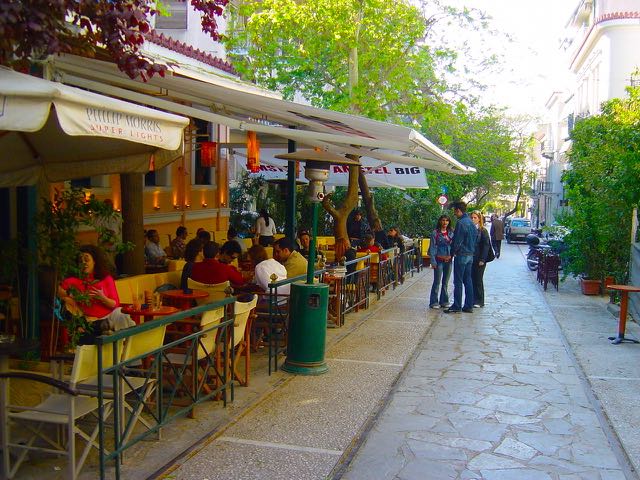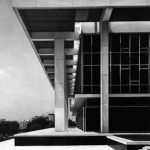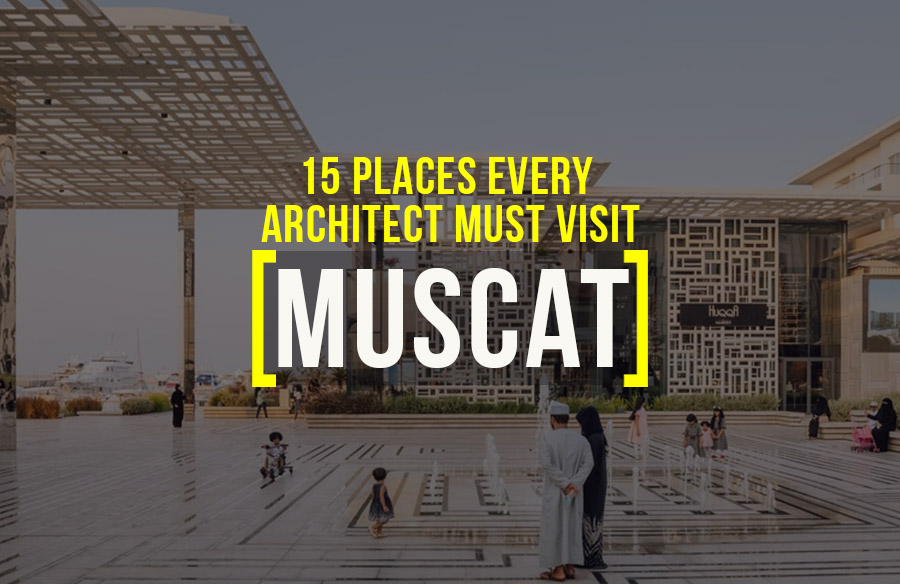Athinai or Athens, the capital of Greece, has a history that spans across various periods starting from Neolithic Greece (7000 BC- 3100 BC) to Modern Greece (1821- present-day). Thus, this city has a vast timeline of conquerors. One of the areas most affected by this conveyor belt of rulers was the city’s architecture.
Every monument mentioned in this article has undergone many alterations in its form and some in its function throughout its history. As we are aware that along with the physical aspects, a building is also built by the sociopolitical scenario of its site, reading about the history before visiting any place will make the experience even more enriching.
Although the city has a host of brilliant architecture hidden in every corner of its streets, the following 16 places should definitely not be missed out on your next architectural trip to Athens!
1. The Acropolis In Athens
The Acropolis in Athens is also known as the Sacred Rock. Its original function during the Neolithic period was to serve as a fortress and a military base, due to its position that offered a great view of the land and the sea. If visited now, it stands as a city of temples, the forms of which were built by the founder of the Athenian democracy, Pericles. The Acropolis has three temples of major importance; the Parthenon, the Erechtheion, and the Temple of Nike.

a. The Parthenon
The Parthenon was built between 447-432 BCE, in the Age of Pericles. It was dedicated to Athens’s patron deity Athena. The Parthenon is a mix of two architectural styles– Doric and Ionic. The dimensions of the temple were 30.88×69.5 m, and it was built using a ratio of 4:9 in most of its built volumes. Unlike the usual 6×13 Doric arrangement, the outer columns of the temple were in an 8×17 arrangement along with its breadth and length respectively. Within the colonnade was an inner cell that had six columns at the front and back. The cell had two separate rooms, one was used as the city’s treasury and the other housed a large-scale statue of Athena. The smaller treasury contained four ionic columns that supported the roof section, and the other room had a Doric colonnade surrounding the statue from three sides. The roof was constructed using cedar wood beams and marble tiles. The corners of the roof had lion-headed spouts for water drainage.
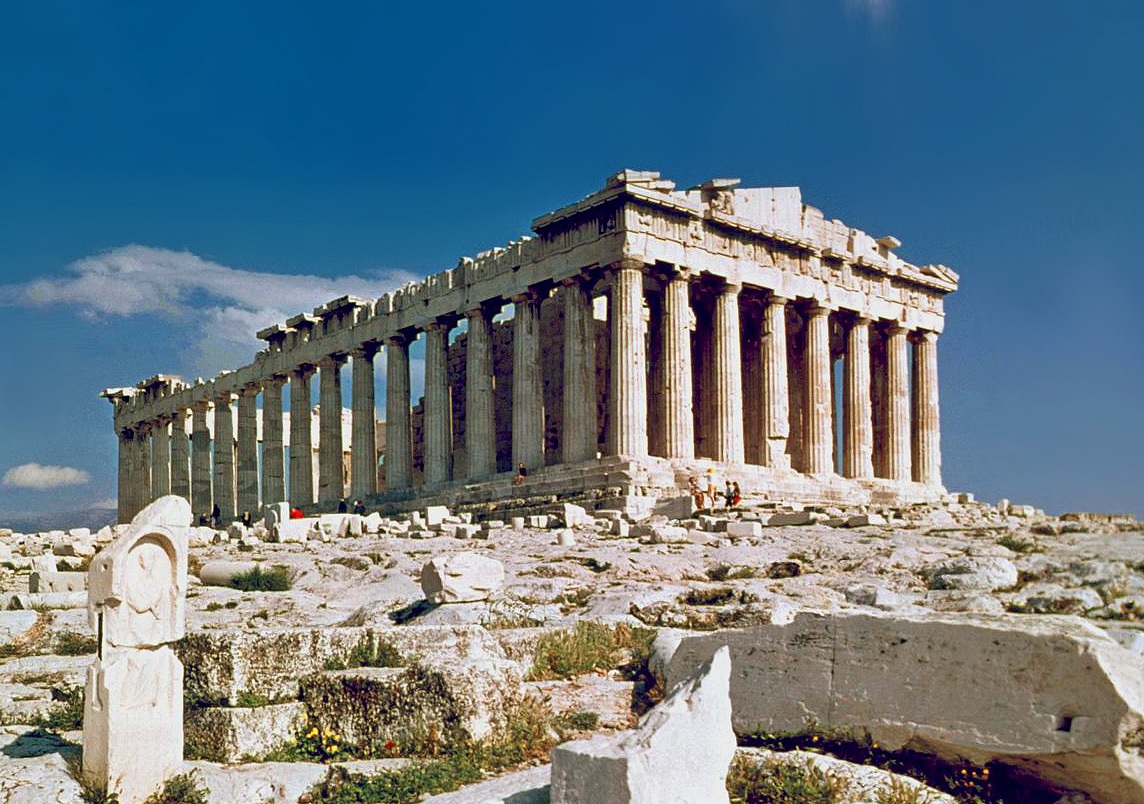
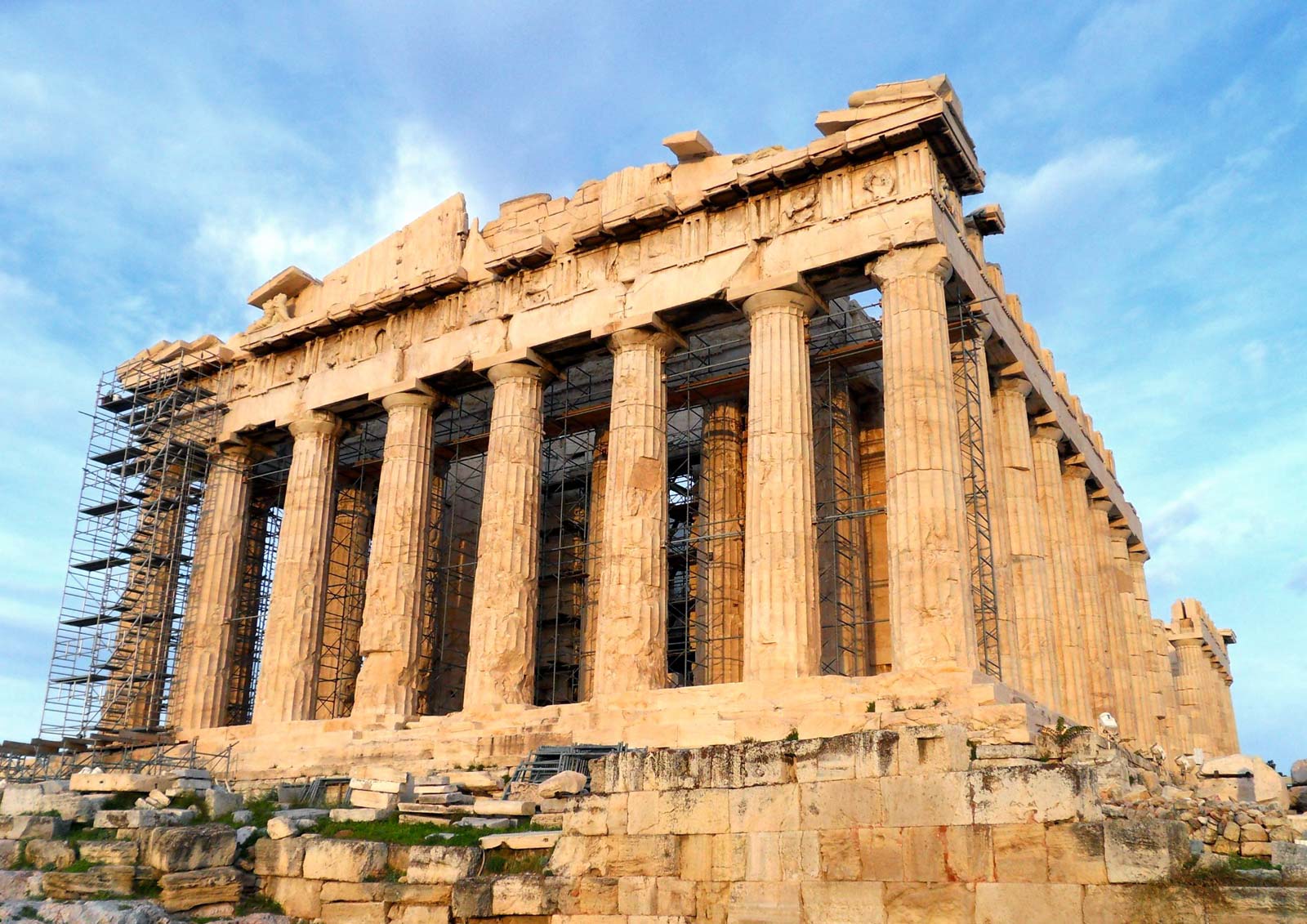

b. The Erechtheion
The Erechtheion in Athens was built between 421-406 BCE, in the Golden Age. Like the Parthenon, the Erechtheion dedicated to Athena and Poseidon. It housed a sculptor of the city’s deity Athena. After the Persian attack on the city, the project to rebuild the city was initiated by Pericles and supervised by Pheidias. However, due to continued hostility between Athens and Sparta, the construction period was interrupted and finally got completed by the architect Philocles. The temple was built from the Pentelic marble which came from the nearby Mt. Pentelicus. It contains traces of iron which has now oxidized over time and given the surface a golden tint. Although accurate measurements have been difficult to gauze from the ruins, some of the dimensions are agreed upon by scholars. The inner cell is roughly 22.22×11.16m and is divided into four chambers. On the Eastern facade, six 6.8m tall Ionic columns mark the principal entrance. Around the precinct are another six 7.63m Ionic columns. The north side is the porch that is sacred to Poseidon Erechtheus and on the south side is the Caryatid porch. The highlights of the building are the Caryatids. From their Doric robes to their plaited hair, these sculpted figures were rendered in fine detail.


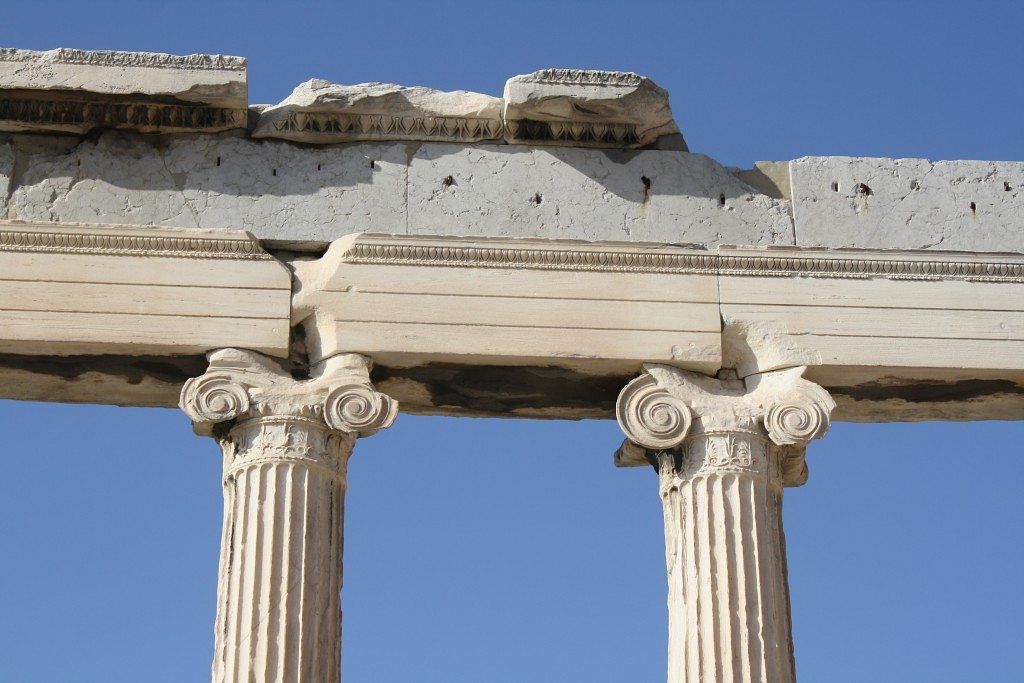
c. The Temple of Nike
The original temple of Nike in Athens was destroyed and rebuilt in the fifth century, and has been reconstructed four times since. The temple was originally built to honor the goddess of victory, Athena Nike. In the fifth century, the temple was constructed into a newer classical version. A smaller version was built again in the sixth century B.C., in the Archaic period. After being destroyed during the Persian attack in 480 B.C., the temple started to get rebuilt in 449 B.C. with the architect Kallikrates at the lead. Due to some delay, it was completed around 420 B.C., as a Poros limestone building faced with marble. It was reconstructed in 1834 after getting destroyed during the Ottoman occupation in 1687.

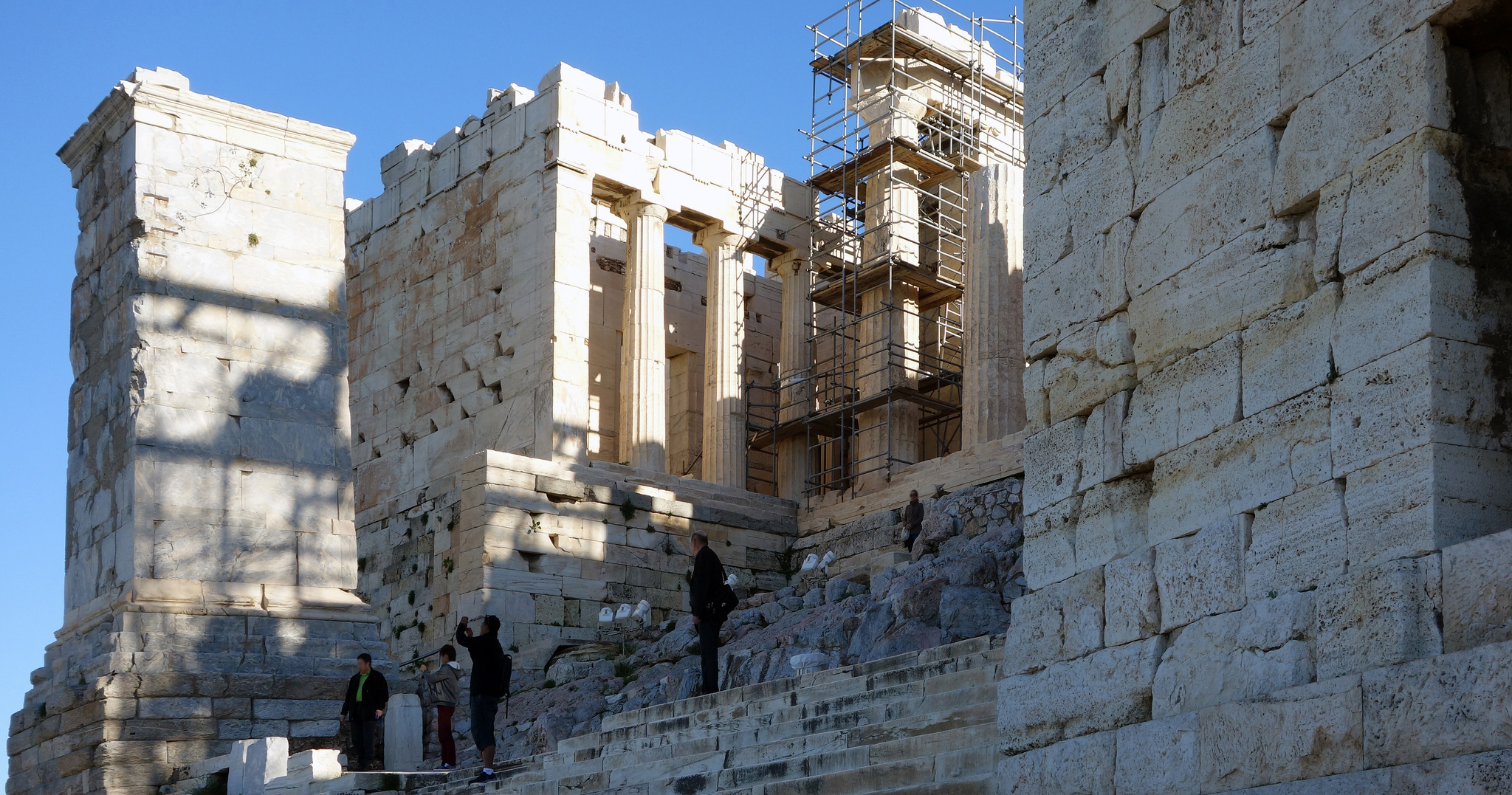
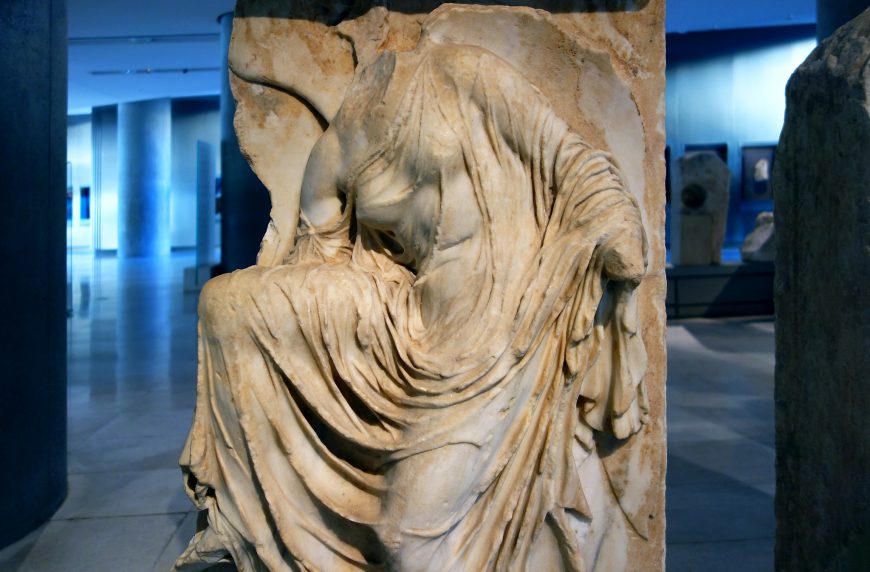
2. The Temple of the Olympian Zeus
The temple is located only 500 m southeast of the Acropolis and 700m south of Syntagma Square. This temple was dedicated to Zeus, the chief of the Olympian Gods. The proper building of this temple began in 174 BCE under the reign of Antiochus IV Epiphanes, who employed the Roman architect Cossutius. By 163 BCE the columns and entablature of the now Corinthian order temple were finally erected. It was Hadrian who finally finished this great temple in 131 CE. There were originally a total of 104 columns out of which only 15 remain today. The Corinthian columns are tall at 17.25 m with a diameter of 1.7 m and 20 flutes. The length of the temple had rows of 20 columns each and the breadth had rows of 8 columns each. The columns have decorative Corinthian capitals carved out of marble. The temple originally contained gigantic gold and ivory statues of Zeus and the main benefactor of the temple, Hadrian.
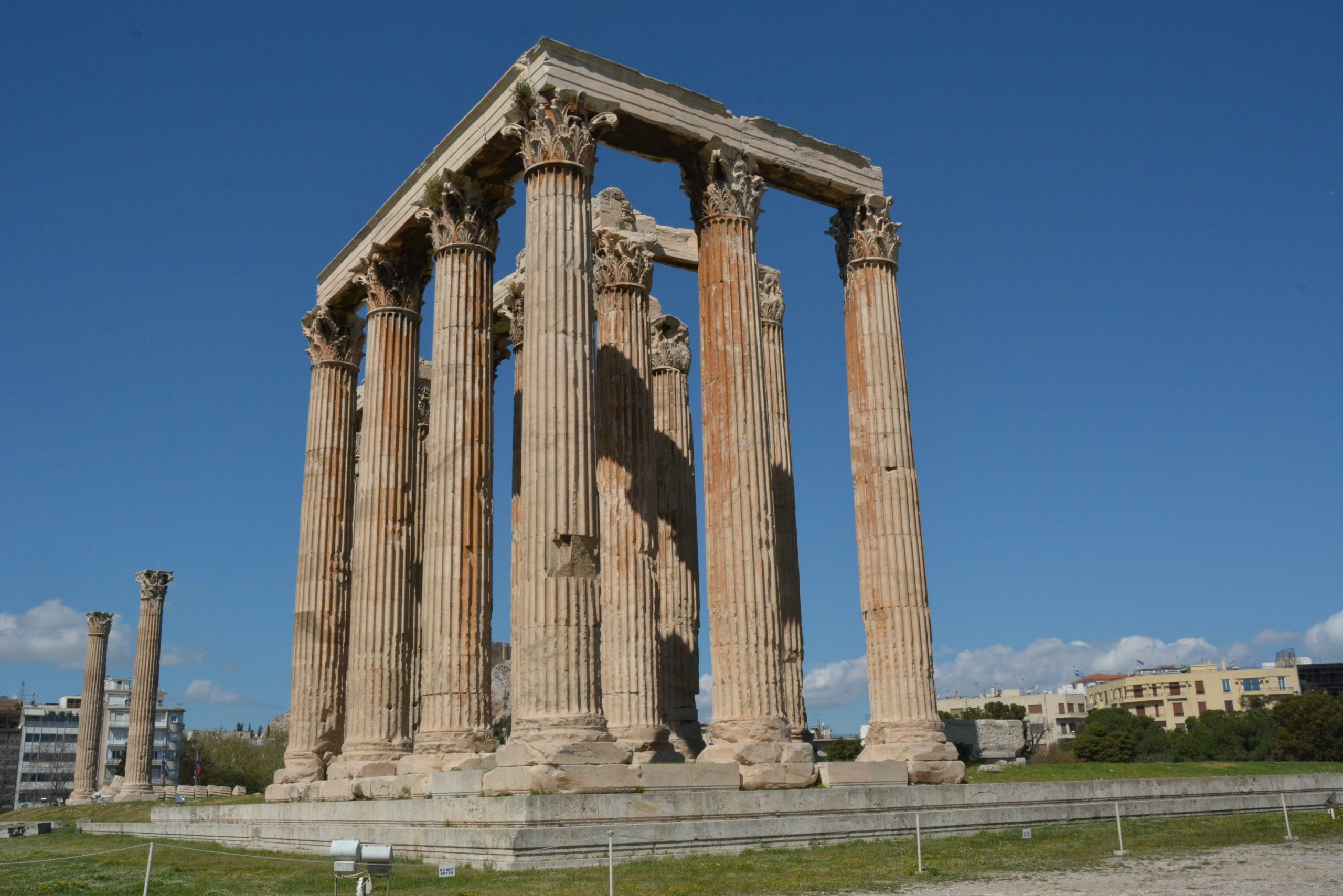

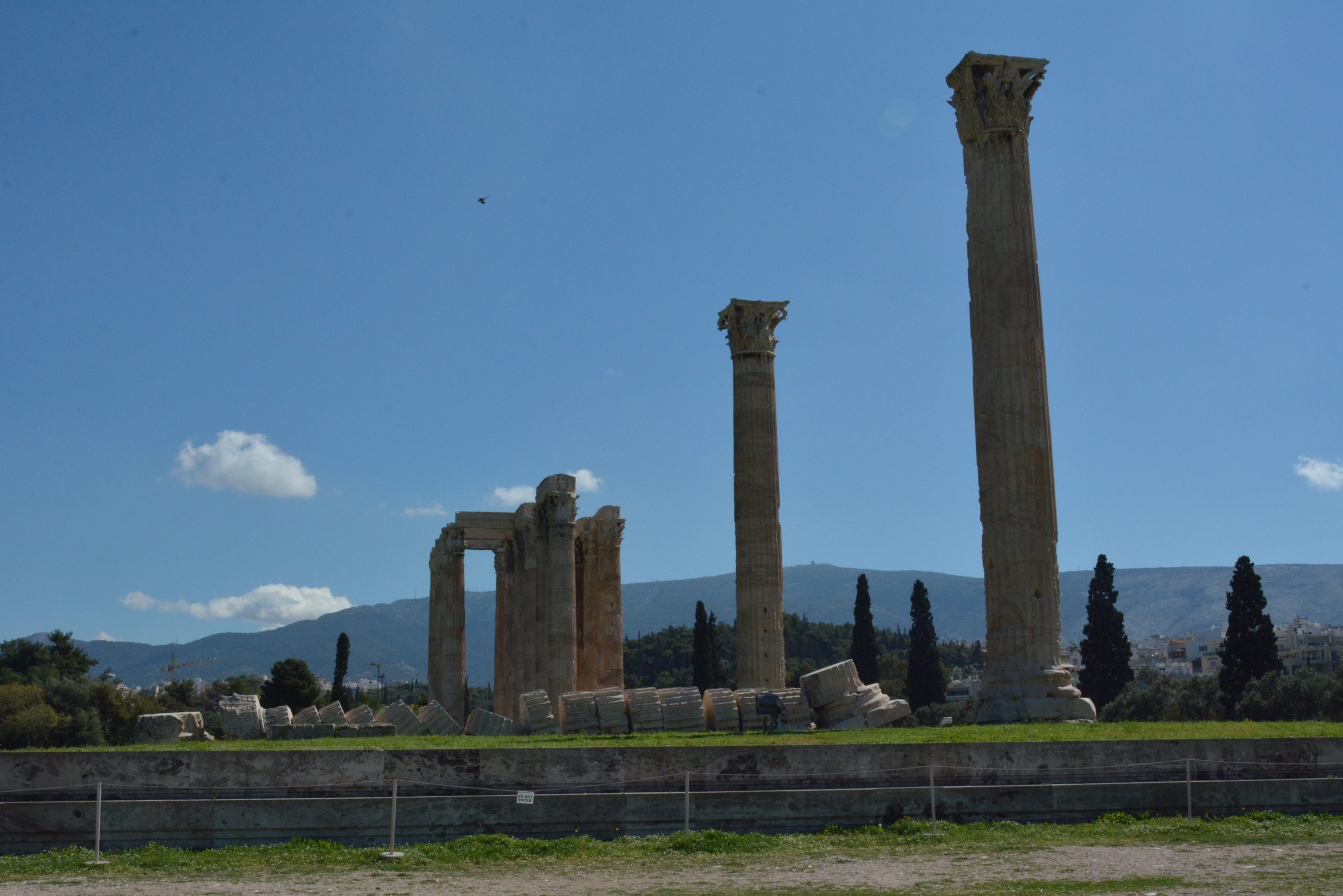
3. The Theatre of Dionysus
Built-in the 6th century BCE, this was the first Greek theatre ever built. The theatre was part of a bigger establishment dedicated to Dionysus Eleuthereus of the Archaic period. In the 5th century BCE, seats made of stone were added in front of the area where the performances took place. Behind the row of stone seats, rows of wooden seats were also added. On both sides of the stage, large gateways were added to mark the entrance. A rectangular stone stage with wings was added by the end of the 5th century. In the 4th century, the ambitious archon Lykourgos made the theatre grander. Among other additions, 67 thrones were added in the front row. The most famous one being the throne reserved for the priest of Dionysus. A monumental Romanesque stage was added in the 1st century CE and a low speaker’s platform in the 2nd or 3rd century CE.
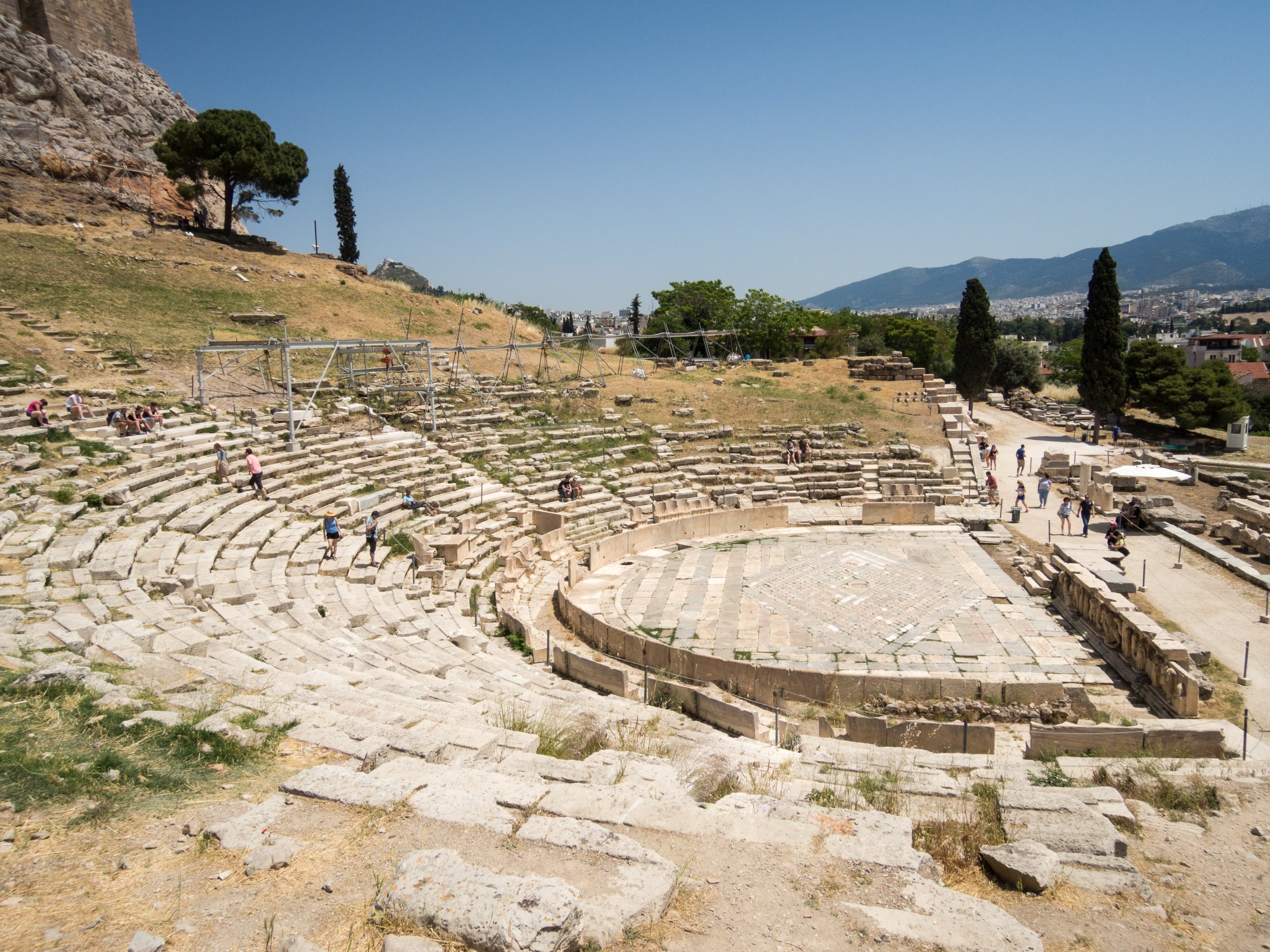
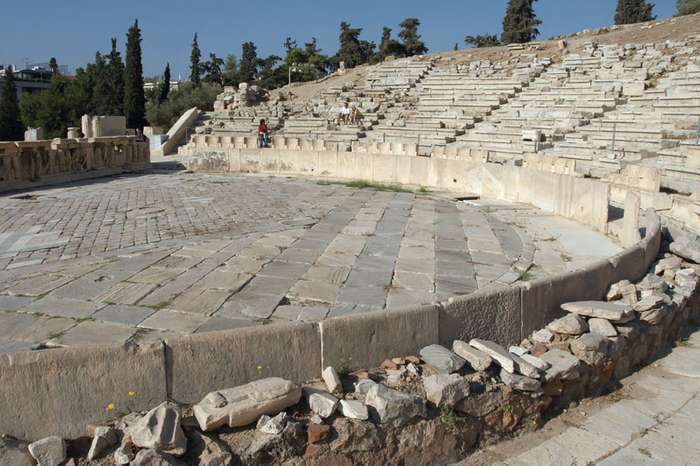
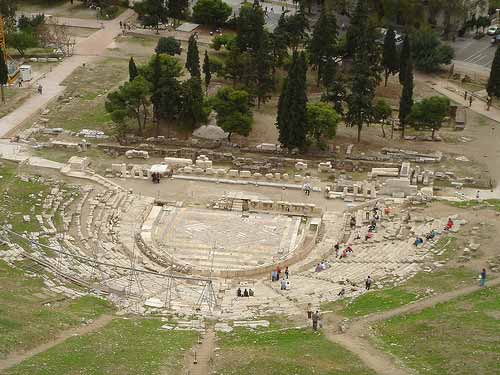
4. Panathenaic Stadium
This ancient stadium was built around 330 BC by the Athenian orator Lykourgos. This is the only stadium to be built entirely out of marble. The stadium was originally a parallelogram with the entrance on one side and the spectator seats on the rest of the three sides. After being restructured and excavated, the stadium was renovated by a Greek businessman George Averoff. The stadium is associated with the Olympics. It held the first Olympiad in 1896 and once again served in 2004.
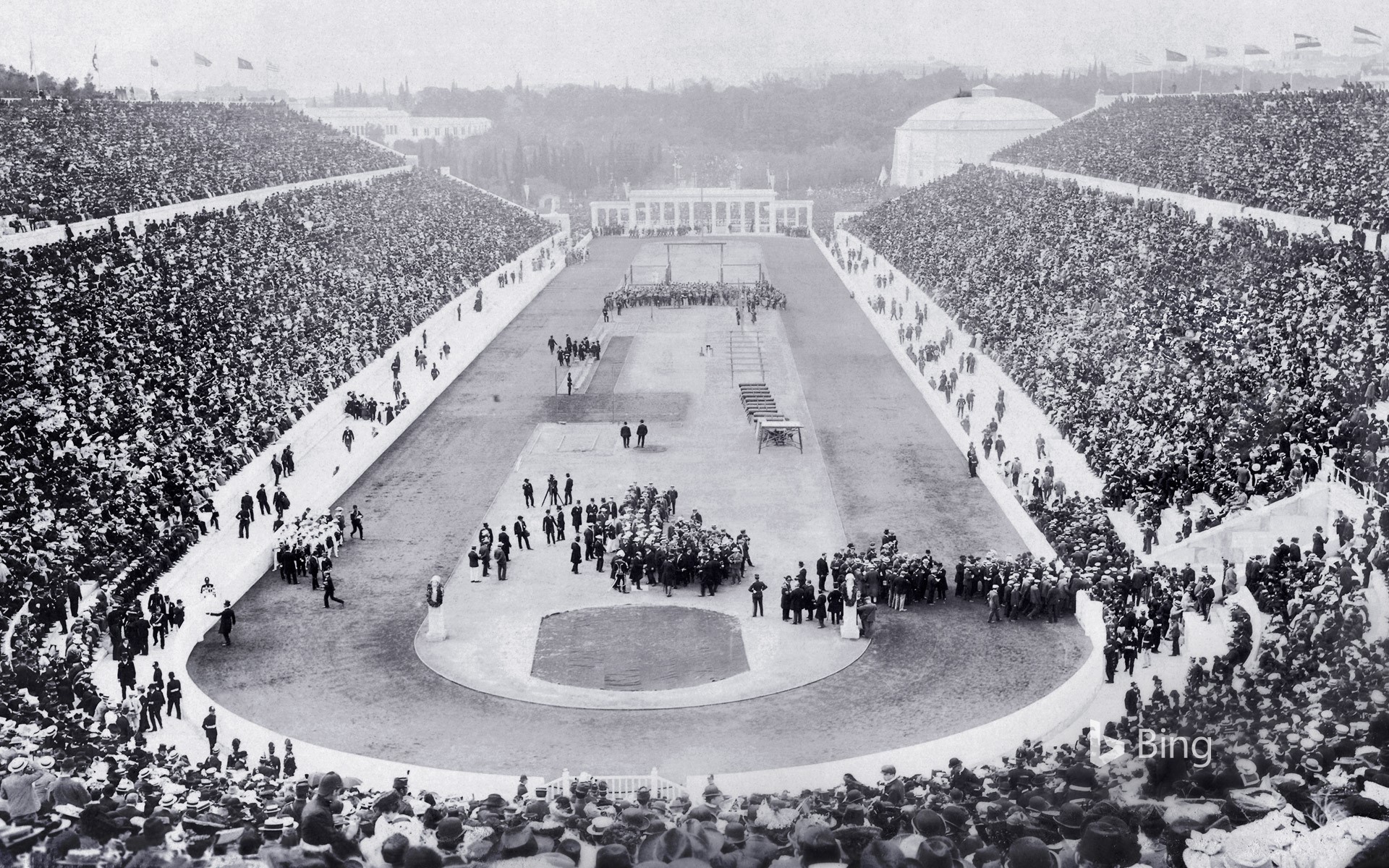
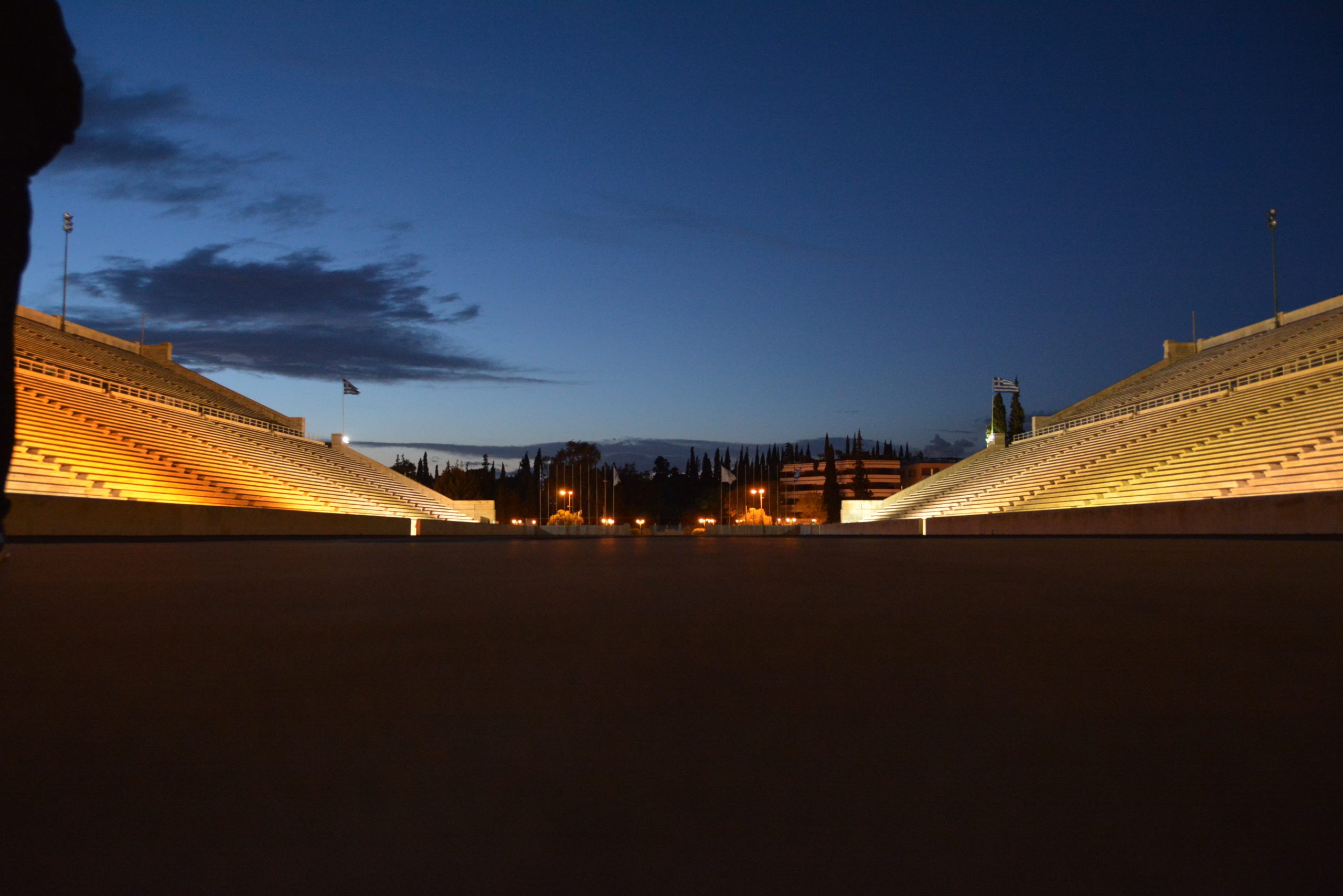
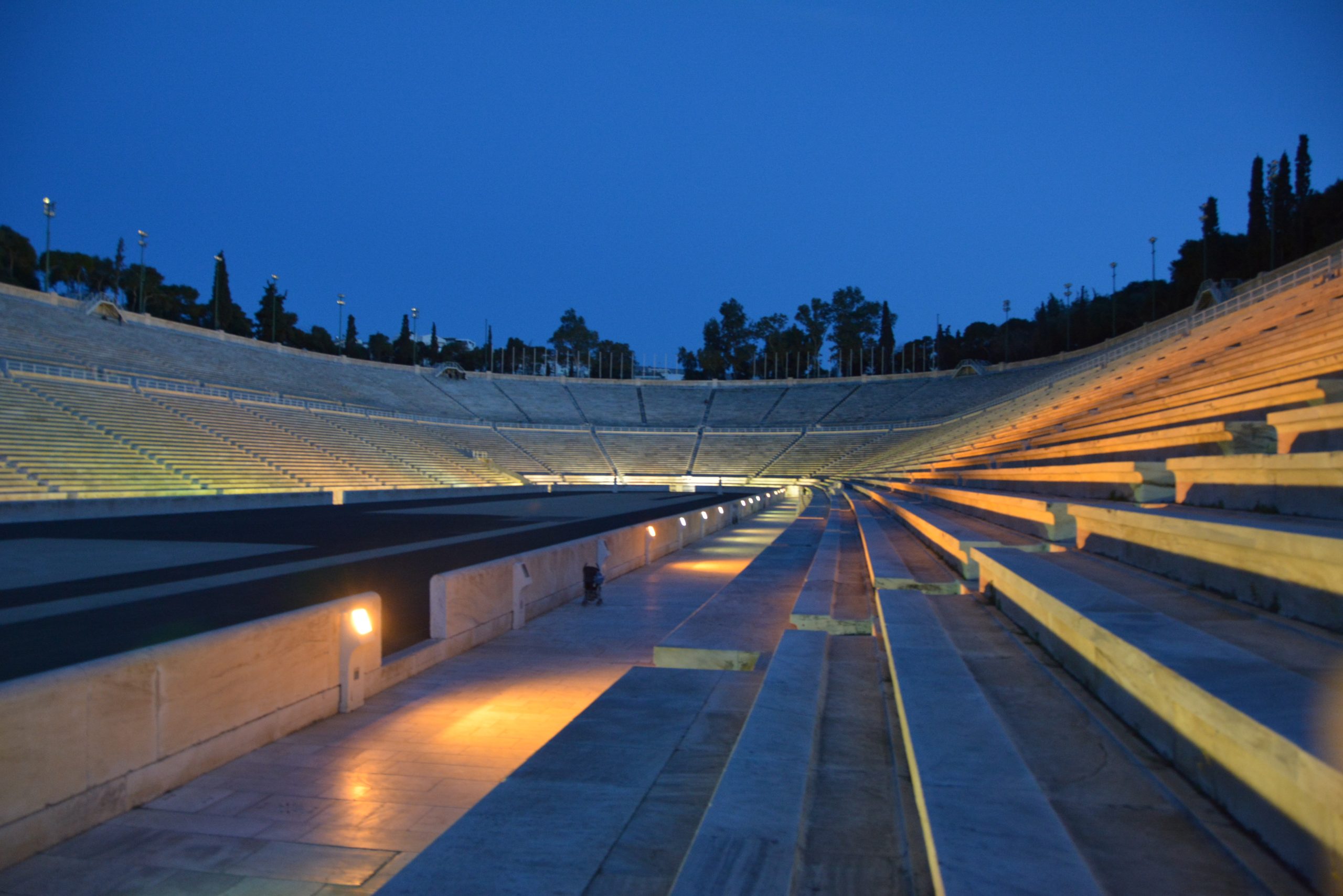
5. Odeon of Herodes Atticus
This ancient amphitheater was originally built in 161 AD and completely restored in the 1950s. It was originally built by the Roman philosopher, politician, and teacher Herodes Atticus in memory of his wife Aspasia Regilla. The theatre in Athens is semi-circular with a radius of 1250 feet and a capacity to seat more than 6000 people. The original stage and seating area were made of marble with a wooden cedar roof covering the theatre. The steep and enchanting place has a no-heel policy and has hosted a range of performers from Frank Sinatra to Florence and the Machine.
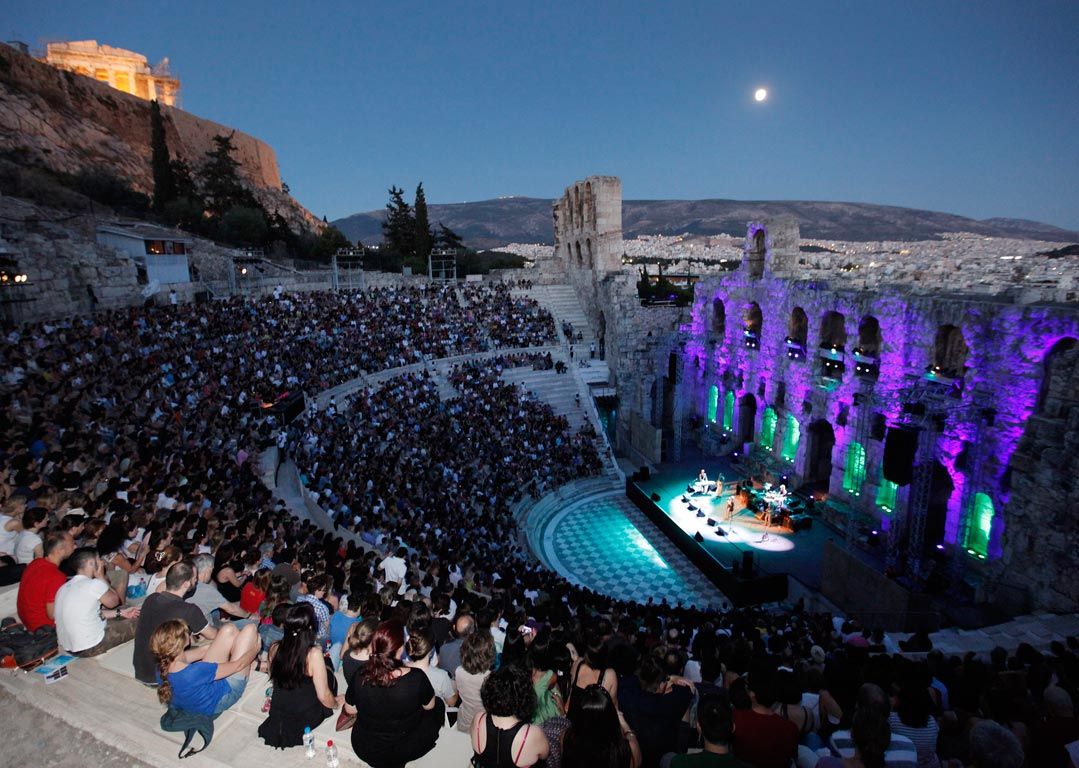
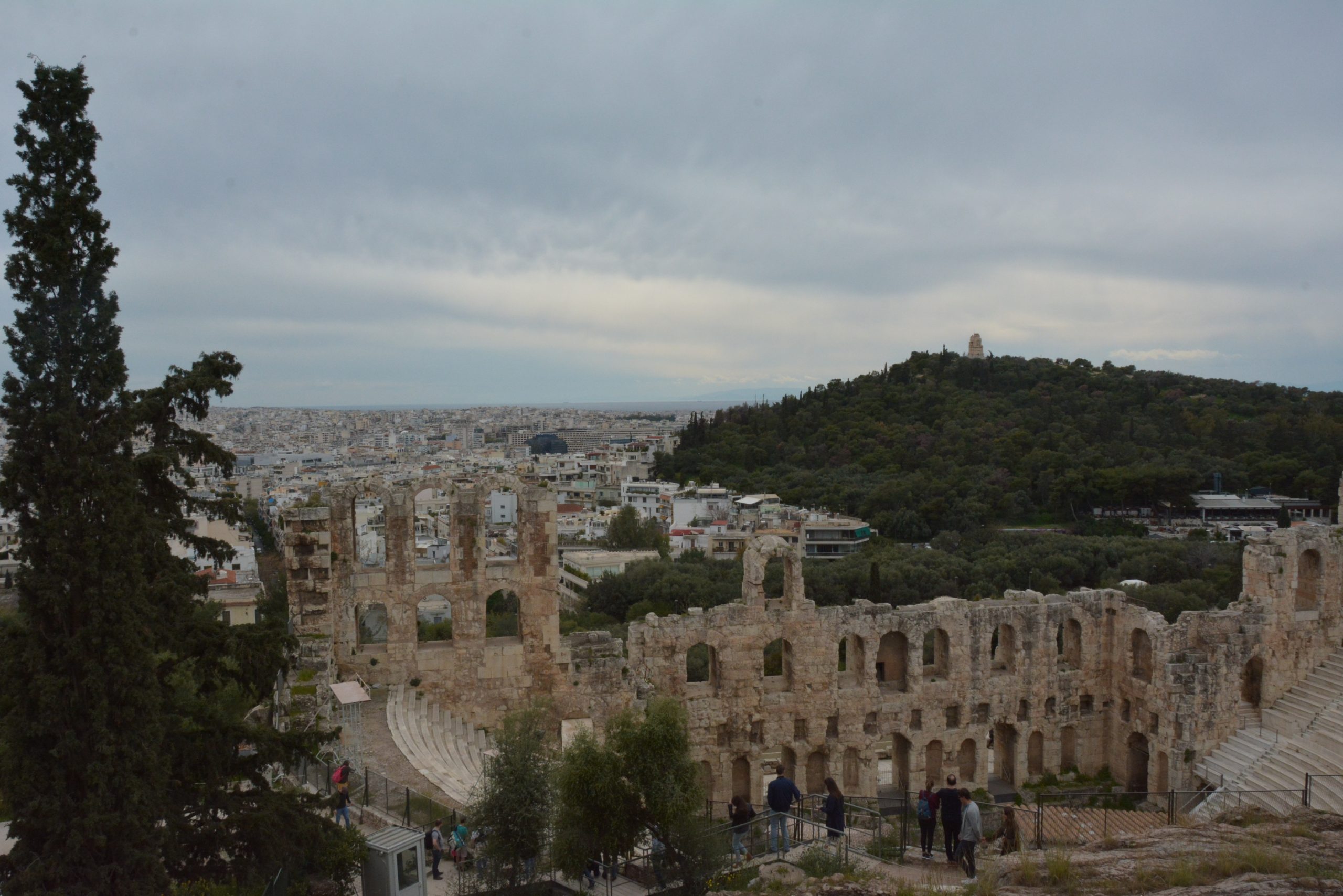

6. The Greek Parliament House of Athens
This neoclassical building in Athens was built in a span of 6 years, from 1836 to 1842, by the German architect Friedrich von Gartner. It originally served as a palace for the Greek kings and then as a museum and hospital after the abolishment of the monarchy in Greece. The building has three floors and two entrances. One used by the MPs for entering the parliament and another which faces the tomb of the Unknown Soldier.


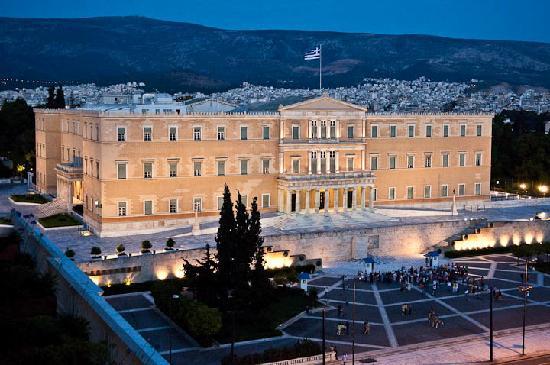
7. Embassy of the United States, Athens
This chancery by the architect Walter Gropius is one of the most prominent Bauhaus buildings in Greece. Completed on the 4th of July, 1961, this building was designed as a metaphor for democracy by the architect. The Pentelic marble, which is also used in the Parthenon, is used to clad the white columns and the reflective surfaces of the façade of the building. Many more different native Greek marbles are used throughout the building.
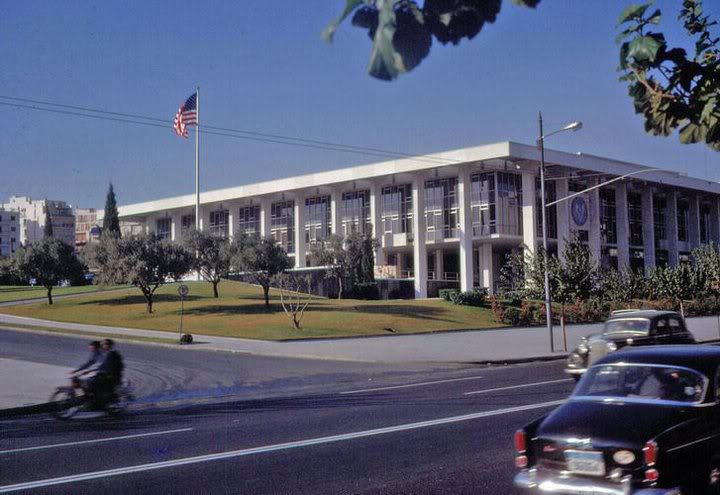
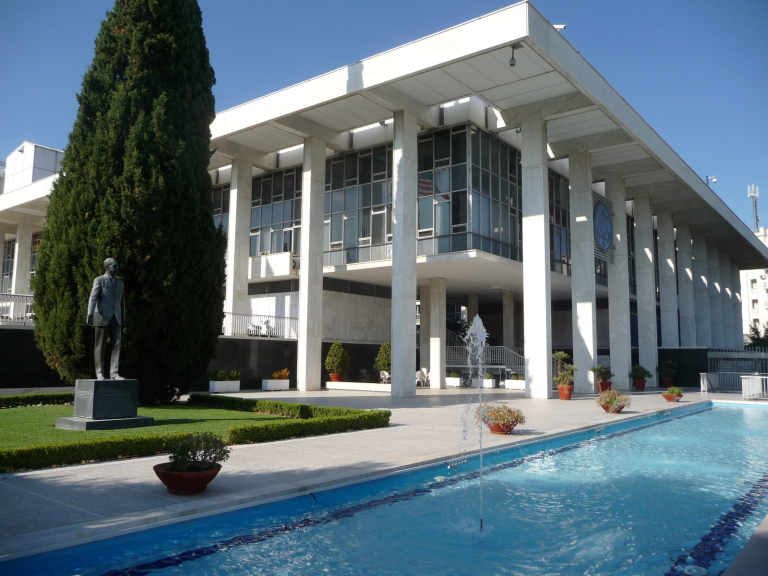
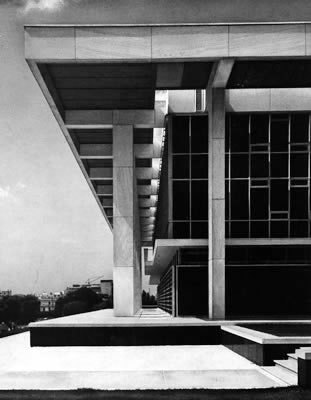
8. The Hilton, Athens
The construction for The Hilton in Athens was completed in 1963. When the building was originally constructed, many people considered this modern piece an eyesore amid ancient architecture. Emmanouil Vourekas, Prokopis Vassiliadis, Spyros Staikos, and Antonis Georgiades were Greek architects who designed the original building and worked on it for five years. The building also has relief work by the Greek artist Yiannis Moralis that faces the road. This building is now one of the most important landmarks of the city.
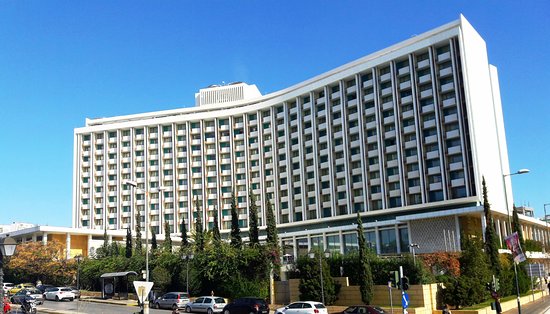
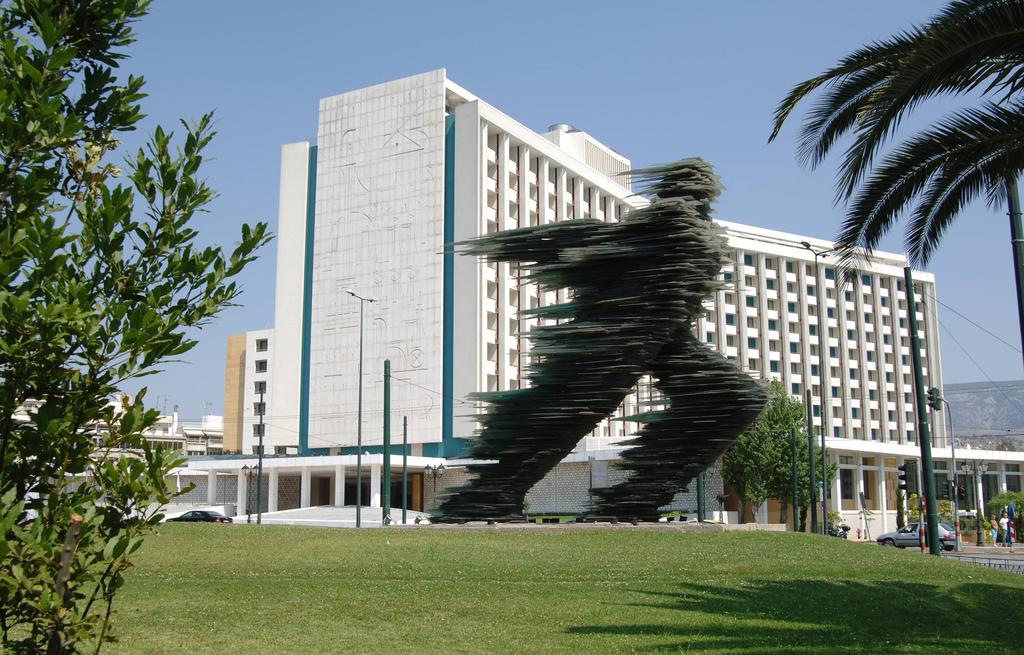
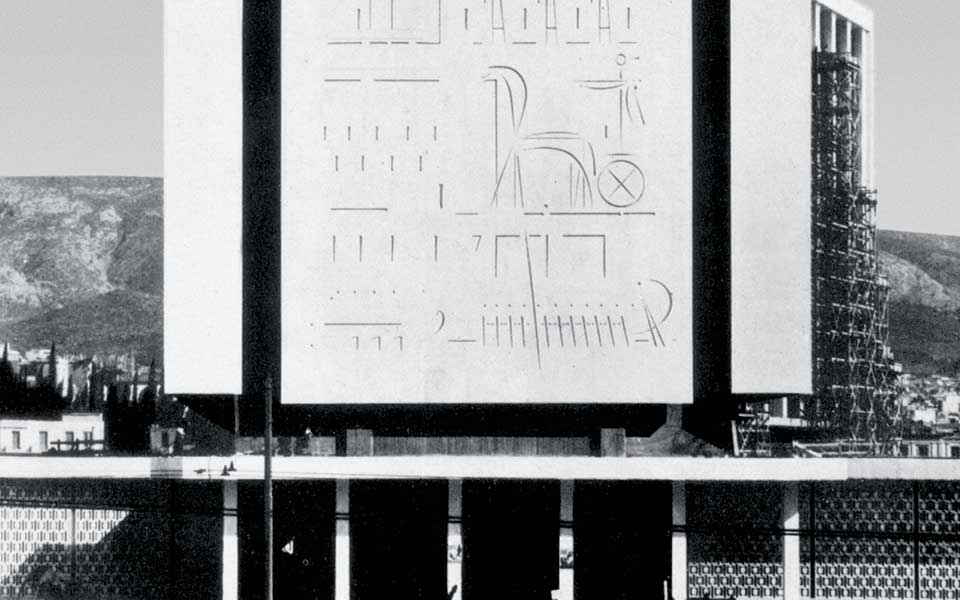
9. The New Acropolis Museum
This museum in Athens was designed by the architect Bernard Tschumi in collaboration with the Athens-based firm Michalis Photiadis & Associate Architects. The first-ever building of the museum was constructed in 1865 but the one built then, and the four others built after that did not have sufficient space for the visitors or the exhibits. The New Acropolis Museum, completed in 2009, efficiently accommodates even the chryselephantine exhibits of Athens’ past. Among other aspects, this building displays an efficient use of natural light. The building is divided into three parts. Each part is rotated slightly to attend to the need for the spaces in it. The lowest part, the base, floats over archeological excavations on Pilotes. The middle part is rotated to accommodate a double-height space and form galleries that follow the contemporary street grid. The top rotates to orient the Marbles exactly as they were placed on the Parthenon. The building uses glass for the façade and some flooring, concrete for the core and columns, and marble for the flooring.


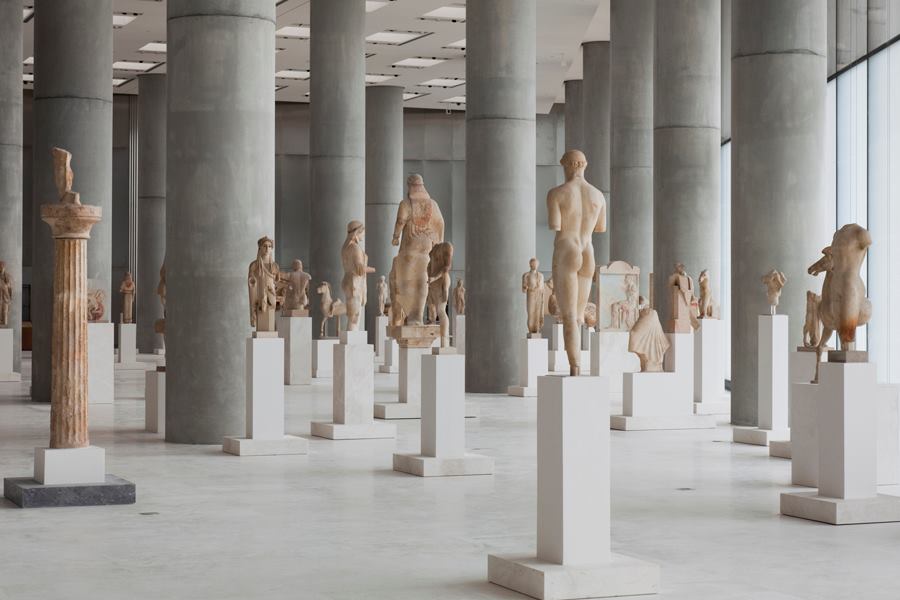
10. Koukaki
Koukaki is a neighborhood in central Athens, which has a mixture of neoclassical buildings, low rise buildings from the 1930s, post-1970 apartments, traditional restaurants, art galleries, and museums on its streets. The neighborhood also has a labyrinth of Cafes that provide everything from cocktails to souvlaki, which is a popular Greek fast food consisting of meat. A walk through Koukaki will make sure to satisfy an architect or a designer’s craving for truly architectural experience in the environment.
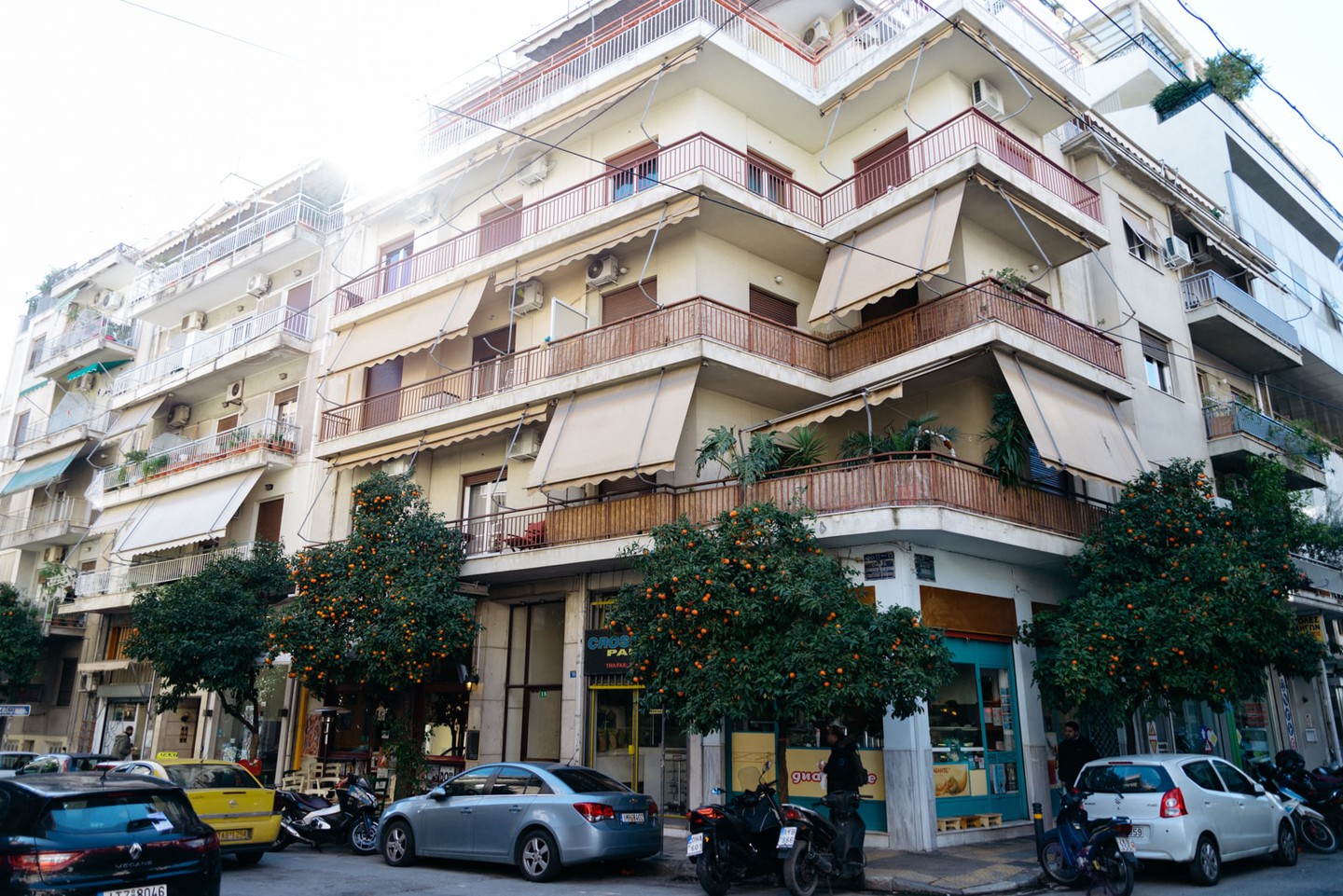
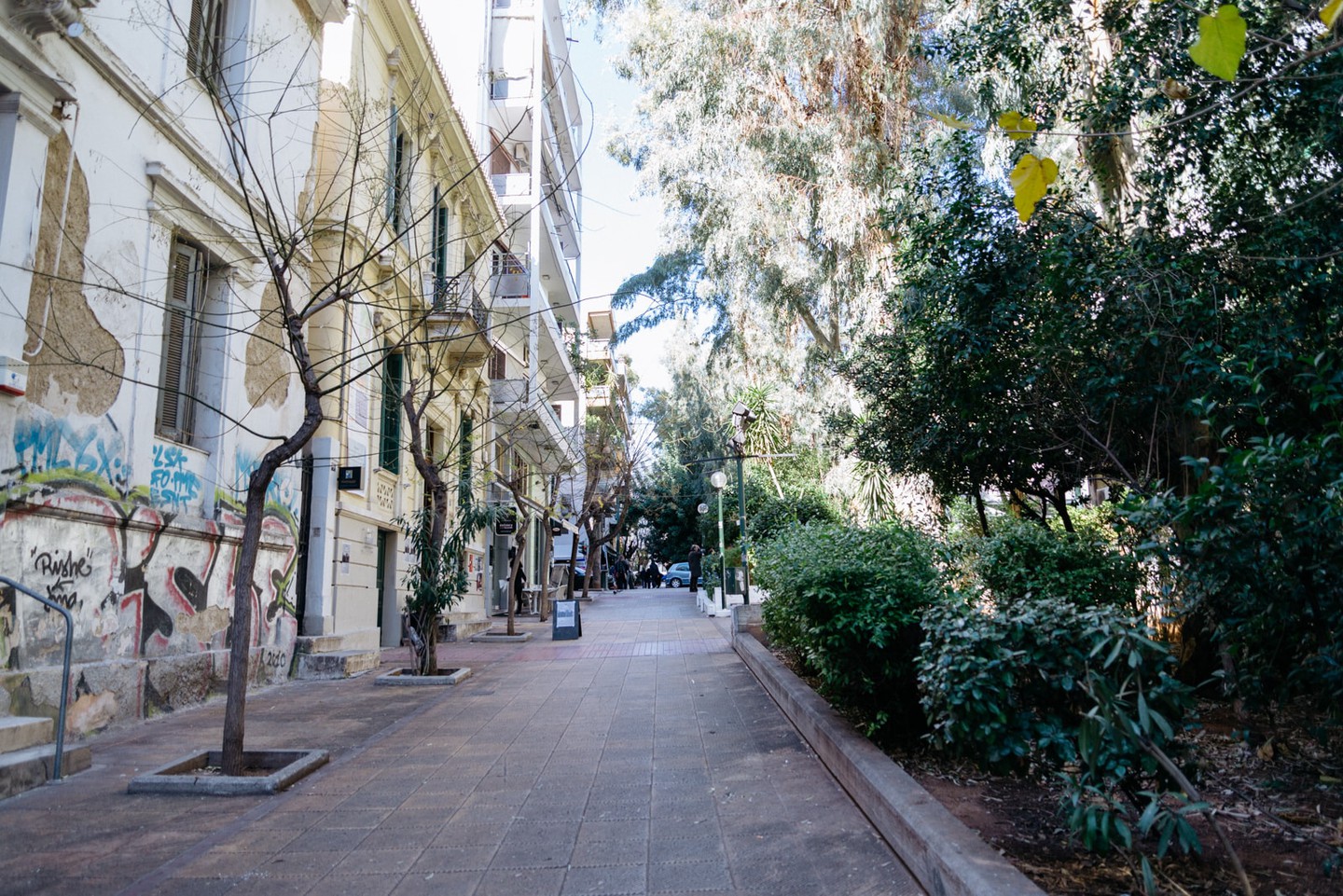

11. Monastiraki
Monastiraki is a beautiful neighborhood situated on the west of Syntagma Square. This neighborhood is lined with narrow streets and alleys. It has numerous shops and street vendors. Quite similar to the Ravivari market in Ahmedabad, this neighborhood has a famous market that occupies the area every Sunday.
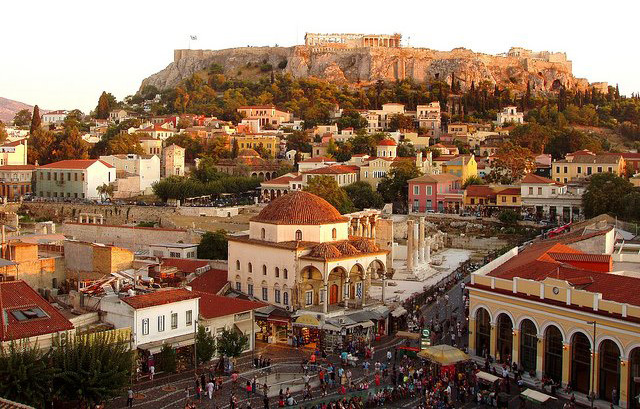
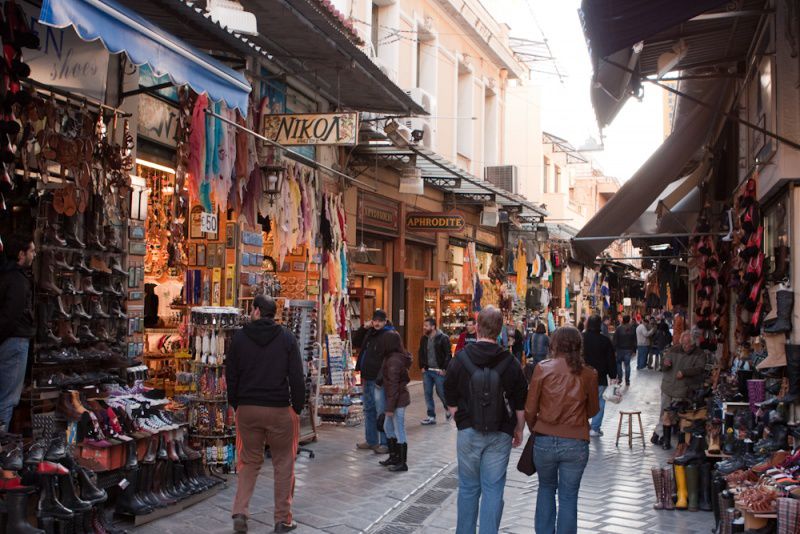
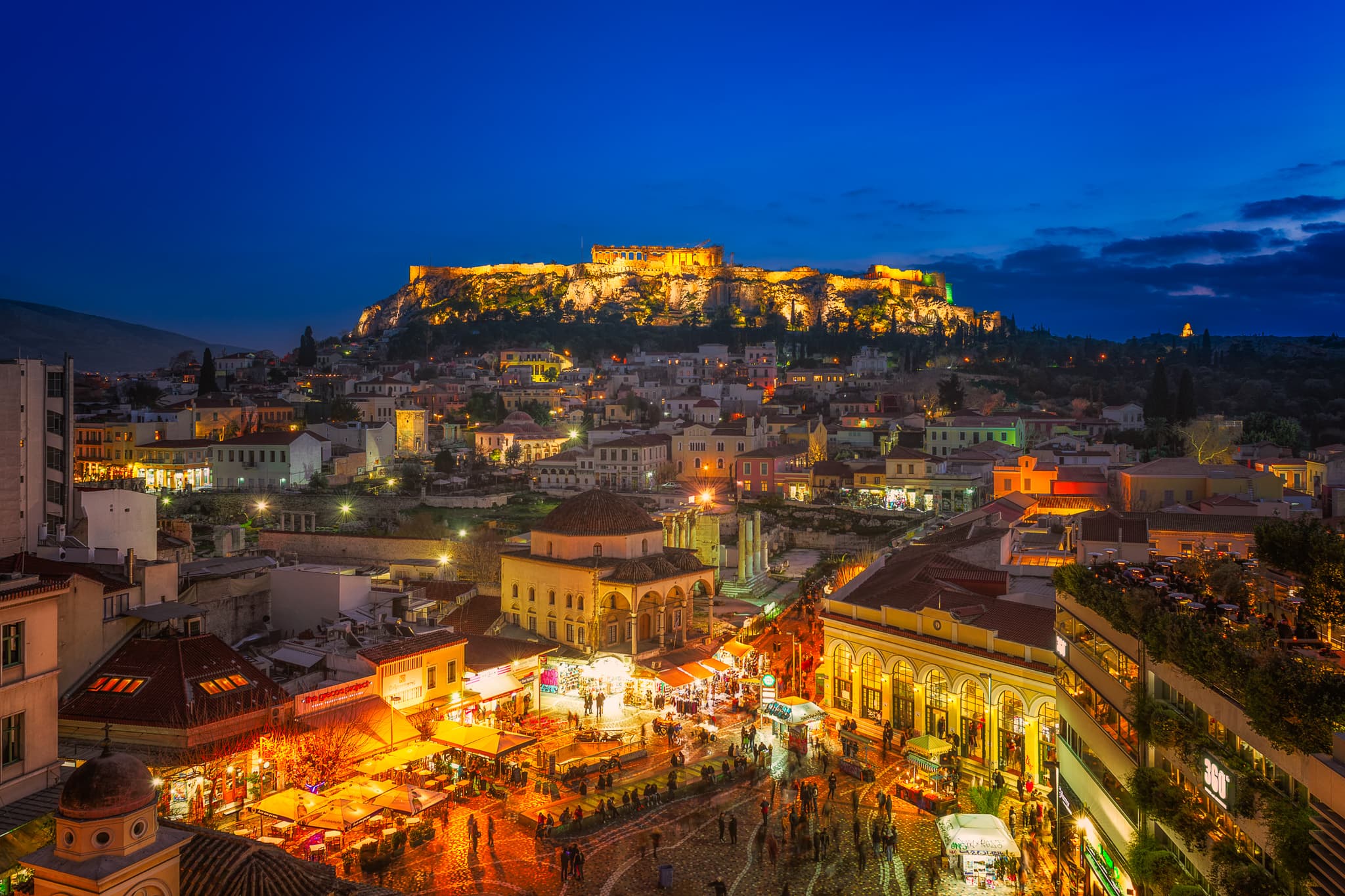
12. Plaka
Plaka is one of the oldest neighborhoods of the city and is located right under the Acropolis. The predominant visual of the neighborhood consists of neoclassical houses that date back to the 19th century. One of the most popular sites is the settlement of Anafiotika which is lined with Cycladic houses that lead up to the Acropolis.
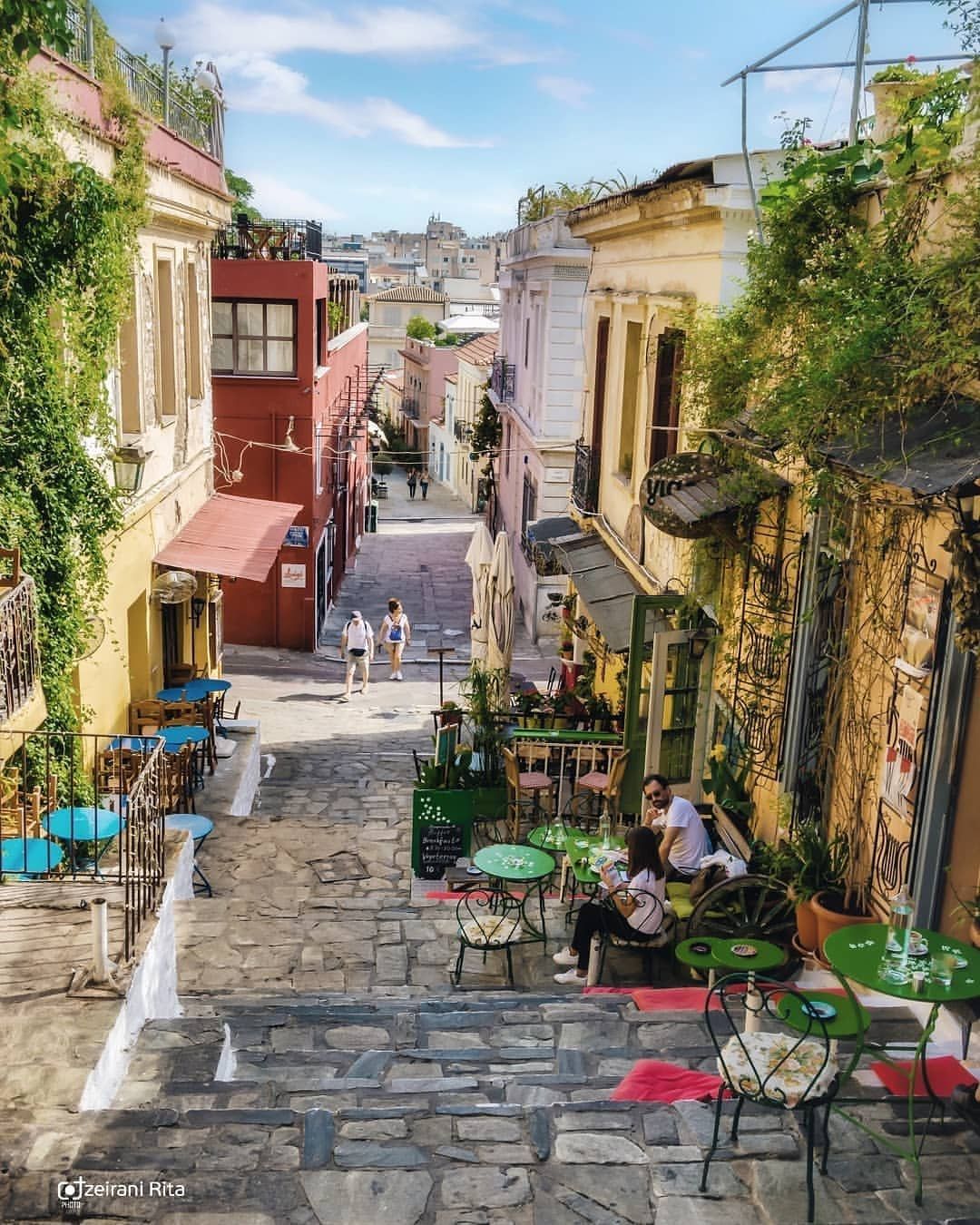
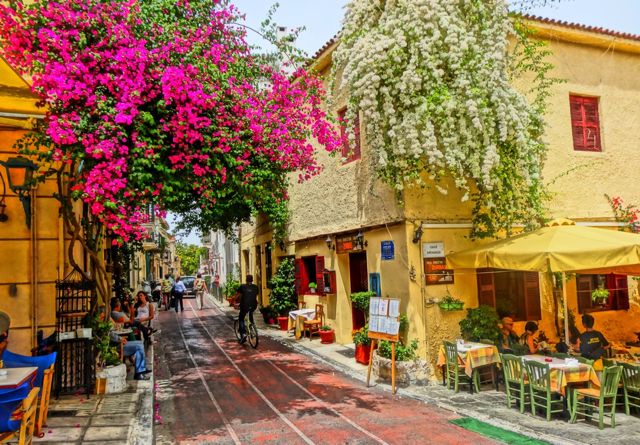
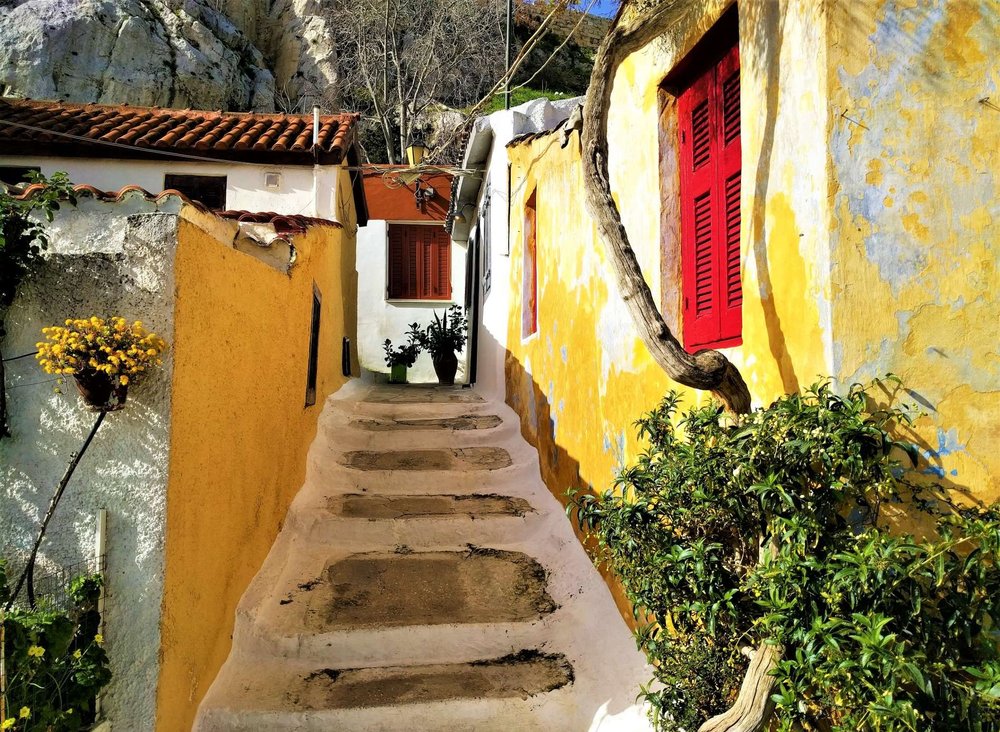
13. Thissio
This is one of the popular neighborhoods in Athens because of its proximity to Plaka and other traditional neighborhoods of the city. It is located in the southwest of Monastiraki. This area has a unique layout and is dominated by neoclassical buildings and an open-air cinema. This area provides an architectural and cultural experience as it is the liveliest neighborhood of the city.
